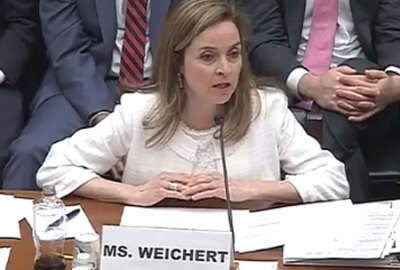
Absent sweeping civil service changes, SES find their own workforce flexibilities
Congress didn't send a sweeping civil service modernization package to the president's desk this year, but winners of this year's Presidential Rank Awards have some...
The 131 senior executives and winners of this year’s Presidential Rank Awards wear multiple hats.
They’ve saved their agencies millions of dollars. They’ve reduced veterans homelessness and modernized Coast Guard cybersecurity. They’ve investigated the Deepwater Horizon spill and sexual harassment at the National Park Service.
About 1.2 percent of the Senior Executive Service were honored with a Presidential Rank Award this year.
And many of them, like a handful of good government groups in recent months, are also seeking and finding ways they can stretch the bounds of a static, decades-old civil service system. A system that hasn’t seen a major update since 1978.
The Senior Executives Association, which produces the Presidential Rank Awards ceremony, isn’t advocating for wholesale legislative reform that Congress sends to the President’s desk. Instead, it’s pushing 10 broad ideas for the Trump administration, senior executives, good government groups and lawmakers to consider when preparing to modernize the federal workforce.
The challenges facing the federal workforce are clear, the executives said. The existing civil service doesn’t easily allow agencies to adapt to the evolving realities of the 21st century. Employees themselves crave more flexibility.
“How do we become greater enablers of flexibility for the staff? How do we back off and let them run?” Peter Grevatt, director of the Environmental Protection Agency’s Office of Ground Water and Drinking Water, said Thursday during a panel discussion on the future of work at the Senior Executives Association’s Presidential Rank Awards summit in Washington.
But many senior executives have found promising ideas to address these frustrations, and they don’t take new legislation or changes in statute.
“We, for years, spent a lot of time waiting for resources [and] waiting for dollars to do what we needed to do,” Nancy Sieger, deputy chief information officer for the IRS, said. “In government, if you wait for dollars, you don’t move forward. You stay where you are. You’re lucky if you stay where you are.”
To address employees’ requests for training, IRS has built an internal social media network for its employees to describe their own skills, goals and information about their interests. Sieger said the network helps employees connect and learn from their colleagues, rather than waiting for formal training sessions.
The agency also set up its own training portal, where employees with expertise in a particular topic can teach their colleagues.
The Department of Homeland Security is searching for ways it can holistically address the needs of its employees. The DHS secretary is focusing on employee and family readiness this year.
In particular, the department has been finding ways to use up-and-coming technology to improve worker safety, said Angela Bailey, DHS’ chief human capital officer.
DHS components over the past year have been deploying robotic processing automation and other artificial intelligence capabilities that allow agents to more safely interdict drugs at the border, for example, or detect potentially harmful barriers before a rescue, Bailey said.
“It’s those kinds of things that our workforce is totally embracing, this whole concept of AI,” she said. “It’s being used in both administrative processes and then it’s being used in absolutely from more of a safety point [of view].”
In the coming weeks, DHS’ top executives will meet to consider how it can use artificial intelligence in the C-suite.
To find and develop next generation of senior executives within the IRS IT shop, the agency assigns a coach and a “buddy” to each new employee. The agency has also developed an emerging leader program.
“We find people across our workforce who aren’t necessarily managers or team leaders but have this great talent to lead us into the future,” Sieger said.
Still, senior executives are looking for more permanent, lasting changes to administrative policy and existing statute that will move the needle further on workforce modernization.
“Find a way to enable our employees to move from job to job easier,” Sieger said. “We have so much talent that sits in the same place. [We need to] find a way within the same agency, across government to move from job to job, because it would make us richer and keep us more engaged.”
Copyright © 2025 Federal News Network. All rights reserved. This website is not intended for users located within the European Economic Area.
Nicole Ogrysko is a reporter for Federal News Network focusing on the federal workforce and federal pay and benefits.
Follow @nogryskoWFED






